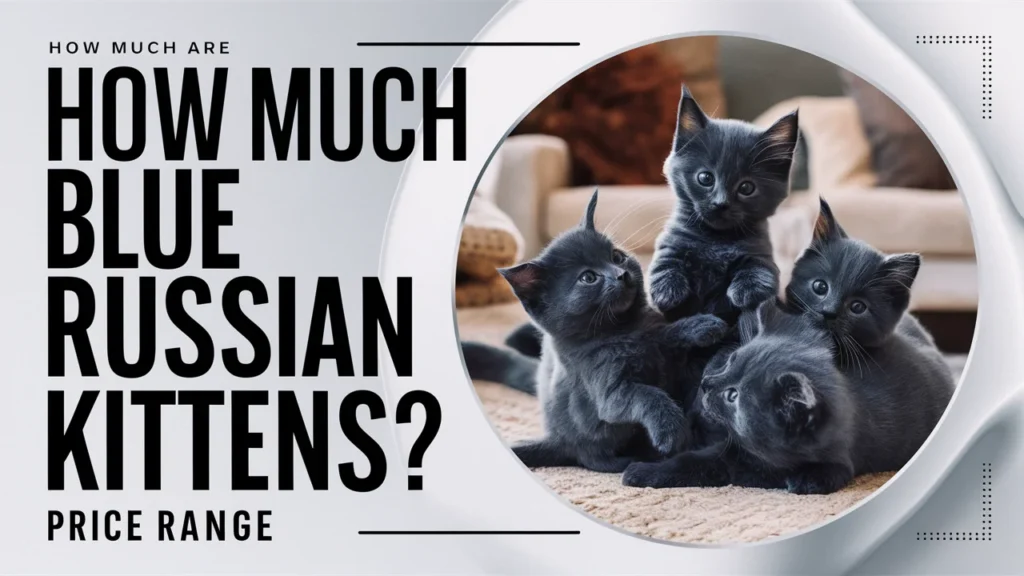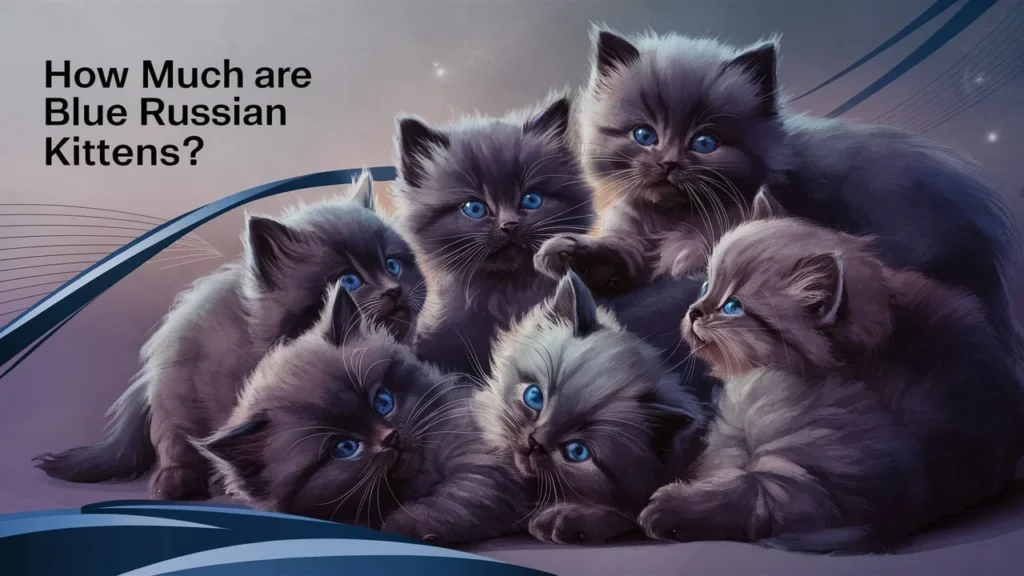Blue Russian kittens are highly sought after due to their elegant appearance, affectionate nature, and captivating personalities. If you are considering adding one of these adorable felines to your family, you’re probably wondering about their cost, factors affecting their price, and what makes them such a prized breed. Let’s dive into the details of how much Blue Russian kittens cost and everything you need to know before making your decision.
What is the average cost of Blue Russian kittens from professional breeders?
The average cost of a Blue Russian kitten from a reputable breeder typically ranges between $800 and $2,500. This price can vary depending on factors like the kitten’s pedigree, health screening, and breeder reputation.
Breeders invest a lot of time and resources into ensuring their kittens are well-socialized, vaccinated, and free from genetic disorders. When you buy from a breeder, you’re paying for a healthy kitten with a lineage that meets breed standards.
For example:
- High-pedigree kittens with champion bloodlines often cost closer to the $2,500 mark.
- Pet-quality kittens that may not meet show standards but make wonderful companions may cost around $800 to $1,200.

What factors influence the price of Blue Russian kittens?
Several factors affect the cost of Blue Russian kittens, making the price fluctuate. Here are the key influences:
- Pedigree and lineage:
If the kitten’s parents are award-winning show cats, the price will likely be higher. - Breeder location:
Breeders in urban areas or regions with high demand may charge more than those in rural areas. - Kitten’s age:
Younger kittens (8–12 weeks old) often cost more due to their higher demand. Older kittens may be priced lower. - Health guarantees:
Breeders who offer warranties or detailed health checks might charge more for the added assurance. - Color variations:
While most Blue Russian kittens are silver or gray, rare color variations can sometimes affect the price.
Is it cheaper to adopt Blue Russian kittens from shelters?
Adopting a Blue Russian kitten from a shelter is often more affordable than buying from a breeder. Adoption fees typically range from $50 to $300, depending on the shelter’s policies and the kitten’s age.
Adoption may also come with additional perks like vaccinations, spaying or neutering, and a microchip—all included in the fee. While it’s rare to find a purebred Blue Russian kitten in a shelter, it’s always worth checking with local rescues or breed-specific organizations.
Why are Blue Russian kittens considered expensive?
The Blue Russian breed is prized for its unique qualities, making it one of the more expensive cat breeds. Here’s why:
- Distinctive appearance: Their luxurious silver-blue coat and green eyes are highly admired.
- Temperament: Blue Russians are known for their affectionate, calm, and intelligent nature, making them ideal companions.
- Selective breeding: High-quality breeding programs ensure the health and temperament of these kittens, which adds to their cost.
How much does it cost to care for a Blue Russian kitten annually?
Beyond the initial purchase price, caring for a Blue Russian kitten involves recurring expenses. Here’s a breakdown:
- Food: Premium cat food costs around $300–$500 per year.
- Litter: Expect to spend about $120–$200 annually.
- Vet visits: Routine check-ups, vaccinations, and potential emergencies can add up to $200–$500 yearly.
- Toys and accessories: Plan for about $100–$200 for scratching posts, toys, and bedding.
In total, you may spend $700–$1,500 annually on your kitten’s care.
Are Blue Russian kittens hypoallergenic?
While no cat is completely hypoallergenic, Blue Russians are considered a good option for allergy sufferers. They produce less of the Fel d 1 protein, the main allergen found in cat saliva and dander.
If you’re sensitive to cats but love the Blue Russian breed, spend some time with one before committing to ensure you can tolerate any allergic reactions.
What is the best age to buy a Blue Russian kitten?
The ideal age to bring home a Blue Russian kitten is around 8–12 weeks old. By this age, kittens are:
- Properly weaned from their mother.
- Socialized with humans and other animals.
- Vaccinated and healthy enough for their new home.
Buying a kitten younger than this age may lead to behavioral or health issues as they miss out on critical developmental milestones.
Are Blue Russian kittens worth the investment?
For many cat lovers, Blue Russian kittens are absolutely worth the investment. Here’s why:
- They are loyal, affectionate, and intelligent pets that bond closely with their families.
- Their low-maintenance grooming needs make them ideal for busy households.
- They can live up to 15–20 years, providing long-term companionship.
If you’re seeking a loving and elegant feline friend, a Blue Russian kitten is a wonderful choice.
Are there any hidden costs when buying Blue Russian kittens?
In addition to the kitten’s purchase price, there are potential hidden costs to consider, such as:
- Spaying or neutering fees (if not included): $100–$300.
- Pet insurance: Around $10–$30 per month, depending on coverage.
- Transportation fees: If the breeder is in another state or country, shipping costs can range from $200–$500.
- Registration fees: Purebred kittens often come with registration papers, which may involve a small fee.
Conclusion
Blue Russian kittens are a delightful addition to any household, but their cost and care requirements should be carefully considered. From the initial purchase price to yearly expenses, understanding what goes into owning one of these elegant felines will ensure you’re fully prepared for the journey ahead. Whether you choose to buy from a breeder or adopt from a shelter, the companionship and love of a Blue Russian kitten are truly priceless.
If you’re ready to bring a Blue Russian kitten into your life, remember to research thoroughly, budget for their care, and choose a reputable breeder or adoption center. These graceful and intelligent cats are sure to bring joy and warmth to your home for years to come.

